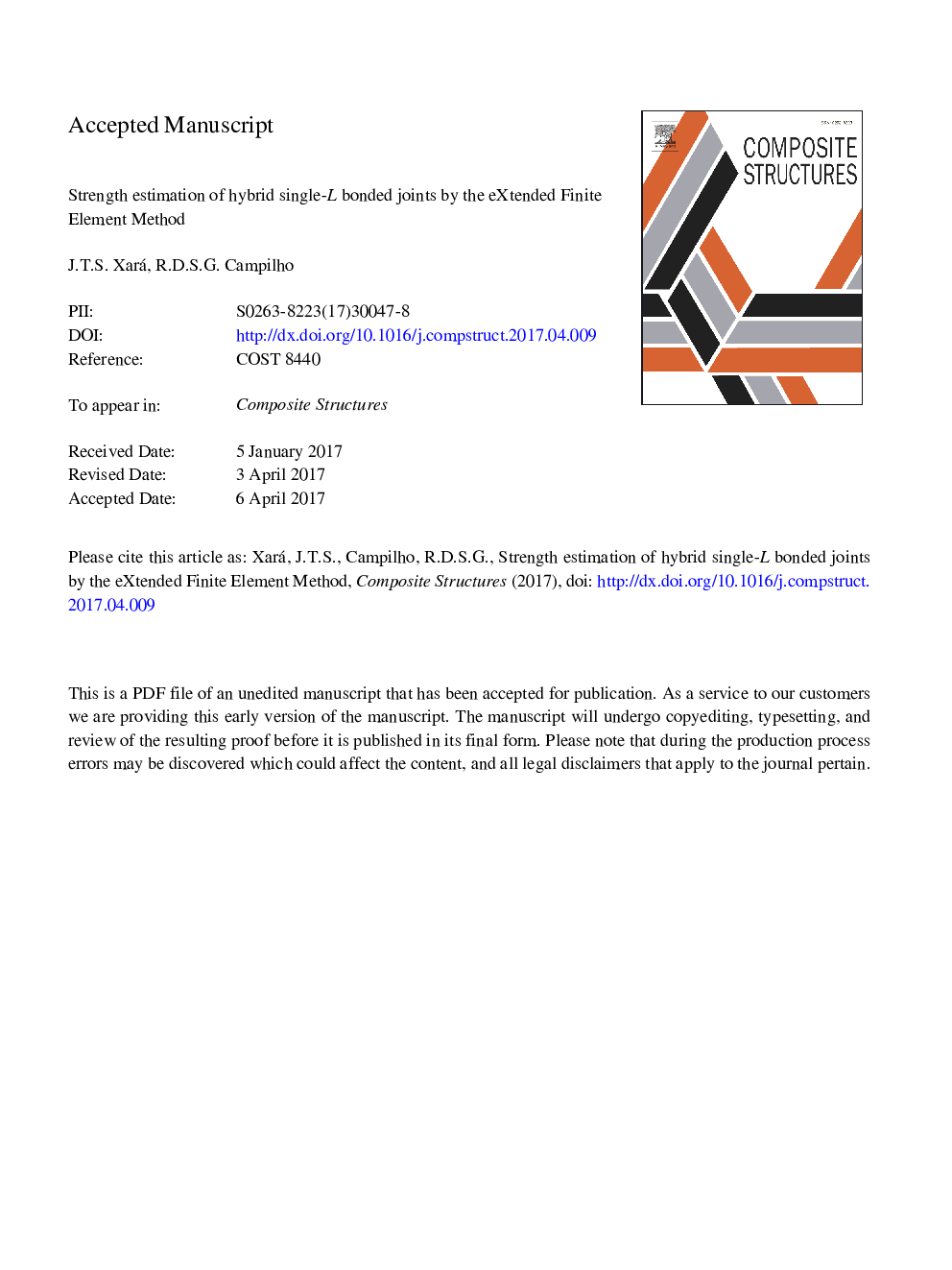| Article ID | Journal | Published Year | Pages | File Type |
|---|---|---|---|---|
| 6705078 | Composite Structures | 2018 | 28 Pages |
Abstract
High-strength composites are widely used in several industries, such as aeronautical, automotive and naval, and they can be combined with metals to provide significant advantages in structural design. The application of adhesive bonding to these assemblies supposes the existence of reliable design tools to accurately analyse the joints' behaviour. In this context, the eXtended Finite Element Method (XFEM) is a recent possibility to predict bonded' joints fracture behaviour. This work aims to study by XFEM single-L adhesive joints between aluminium components and carbon-epoxy composites under peeling loads, considering the variation of the L-shaped adherend's thickness (tP2) and adhesives of distinct ductility. The XFEM analysis was either based on stress or strain criteria for assessment of damage initiation, and different damage law types for crack propagation. Validation was undertaken with experimental data. The XFEM analysis revealed that this method is very accurate when using specific stress-based quadratic initiation criteria and the triangular propagation law. It was shown that the L-shaped adherend's geometry and the adhesive type are the most important parameters affecting the joints' strength.
Related Topics
Physical Sciences and Engineering
Engineering
Civil and Structural Engineering
Authors
J.T.S. Xará, R.D.S.G. Campilho,
